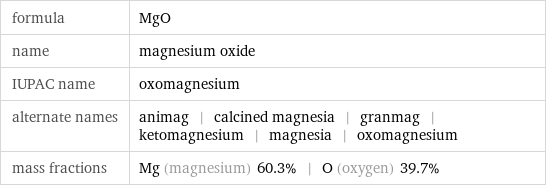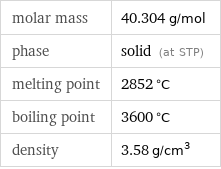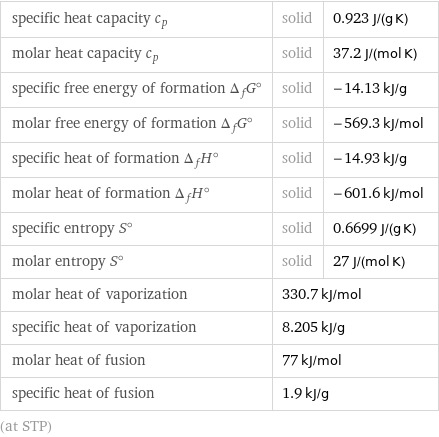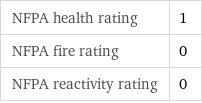Input interpretation

magnesium oxide
Chemical names and formulas

formula | MgO name | magnesium oxide IUPAC name | oxomagnesium alternate names | animag | calcined magnesia | granmag | ketomagnesium | magnesia | oxomagnesium mass fractions | Mg (magnesium) 60.3% | O (oxygen) 39.7%
Lewis structure

Draw the Lewis structure of magnesium oxide. Start by drawing the overall structure of the molecule, ignoring potential double and triple bonds: Count the total valence electrons of the magnesium (n_Mg, val = 2) and oxygen (n_O, val = 6) atoms: n_Mg, val + n_O, val = 8 Calculate the number of electrons needed to completely fill the valence shells for magnesium (n_Mg, full = 4) and oxygen (n_O, full = 8): n_Mg, full + n_O, full = 12 Subtracting these two numbers shows that 12 - 8 = 4 bonding electrons are needed. Each bond has two electrons, so in addition to the 1 bond already present in the diagram add 1 bond. Identify the atoms that want additional bonds and the number of electrons remaining on each atom: Fill in the 1 bond by pairing electrons between adjacent highlighted atoms: Answer: | |
Basic properties

molar mass | 40.304 g/mol phase | solid (at STP) melting point | 2852 °C boiling point | 3600 °C density | 3.58 g/cm^3
Units

Basic drug properties

approval status | approved | small molecule drug categories | antacid dosage forms | oral: liquid | oral: powder | oral: solution / drops | oral: tablet
Solid properties (at STP)

density | 3.58 g/cm^3 vapor pressure | 0.3 mmHg (at 1727 °C)
Units

Thermodynamic properties

specific heat capacity c_p | solid | 0.923 J/(g K) molar heat capacity c_p | solid | 37.2 J/(mol K) specific free energy of formation Δ_fG° | solid | -14.13 kJ/g molar free energy of formation Δ_fG° | solid | -569.3 kJ/mol specific heat of formation Δ_fH° | solid | -14.93 kJ/g molar heat of formation Δ_fH° | solid | -601.6 kJ/mol specific entropy S° | solid | 0.6699 J/(g K) molar entropy S° | solid | 27 J/(mol K) molar heat of vaporization | 330.7 kJ/mol | specific heat of vaporization | 8.205 kJ/g | molar heat of fusion | 77 kJ/mol | specific heat of fusion | 1.9 kJ/g | (at STP)
Chemical identifiers
![CAS number | 1309-48-4 PubChem CID number | 14792 PubChem SID number | 24852193 SMILES identifier | O=[Mg] InChI identifier | InChI=1/Mg.O/rMgO/c1-2 InChI key | CPLXHLVBOLITMK-XATHGJGWAA RTECS number | OM3850000 MDL number | MFCD00011109](../image_source/84cbb6cb038dd638fae0a3c9dd043fa5.png)
CAS number | 1309-48-4 PubChem CID number | 14792 PubChem SID number | 24852193 SMILES identifier | O=[Mg] InChI identifier | InChI=1/Mg.O/rMgO/c1-2 InChI key | CPLXHLVBOLITMK-XATHGJGWAA RTECS number | OM3850000 MDL number | MFCD00011109
NFPA label

NFPA label

NFPA health rating | 1 NFPA fire rating | 0 NFPA reactivity rating | 0
Toxicity properties

odor | odorless

RTECS classes | tumorigen | human data